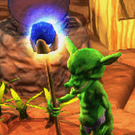Is it a viable solution to develop an entiry game only in Lua? And if it is, how one proceeds with it? Can we use, for example, only Urho3DPlayer with a resource path prefix specified? Or is it OK to use some minimal Lua C++ hook file, something like the following
using namespace Urho3D;
Game::Game(Context* context):
Application(context)
{
}
void Game::Setup()
{
engineParameters_["FullScreen"] = false;
}
void Game::Start()
{
LuaScript* script = new LuaScript(context_);
context_->RegisterSubsystem(script);
script->ExecuteFile("LuaScripts/01_HelloWorld.lua");
LuaFunction* start = script->GetFunction("Start");
start->BeginCall();
start->EndCall();
}
void Game::Stop()
{
}
URHO3D_DEFINE_APPLICATION_MAIN(Game)
Or there’s some other more canonic way to do it?



